By Dakapaia Pohleng Shullai and Daphishisha Khongwir
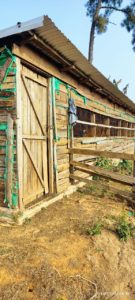 Goat is a muti-functional animal which plays a significant role in the economy and nutrition of landless, small and marginal farmers in the state. In the zodiac calendar of the mountain goat, an in depth study of the local scenario of goat rearing seems opportune. Rearing goats is an enterprise which has been practised by a large section of the population in rural areas. Being a small sized animal, goats can easily be managed by women and children. Goats can efficiently survive on available shrubs and trees in adverse harsh environments and in low fertility lands where no other crops can be grown. In pastoral and agricultural subsistence societies in India, goats are kept as a source of additional income and as an insurance against disaster. Goat meat is also being used in ceremonial feastings. Goats occupy a unique place among domestic livestock in the Northeastern region because of their ability to survive and produce under unfavourable climatic and managemental conditions.
Goat is a muti-functional animal which plays a significant role in the economy and nutrition of landless, small and marginal farmers in the state. In the zodiac calendar of the mountain goat, an in depth study of the local scenario of goat rearing seems opportune. Rearing goats is an enterprise which has been practised by a large section of the population in rural areas. Being a small sized animal, goats can easily be managed by women and children. Goats can efficiently survive on available shrubs and trees in adverse harsh environments and in low fertility lands where no other crops can be grown. In pastoral and agricultural subsistence societies in India, goats are kept as a source of additional income and as an insurance against disaster. Goat meat is also being used in ceremonial feastings. Goats occupy a unique place among domestic livestock in the Northeastern region because of their ability to survive and produce under unfavourable climatic and managemental conditions.
Rearing and Breeding
Goat farming has several advantages over the husbandry of other livestock species. Some of them are briefly mentioned point-wise: (a)Initial investment for starting goatary is lesser than 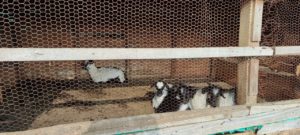 dairy, piggery, poultry. (b)Goats consume less feed which is about one fifth of the consumption in cattle and buffalo. (c)It does not compete with human beings for grains like pig and fowl, so feed cost is less. (d)Goat is a prolific animal which usually produces twins and some breeds even produce triplets and quadruplets (e)There is no prejudice that the goat is a potential animal for economic growth and employment generation.
dairy, piggery, poultry. (b)Goats consume less feed which is about one fifth of the consumption in cattle and buffalo. (c)It does not compete with human beings for grains like pig and fowl, so feed cost is less. (d)Goat is a prolific animal which usually produces twins and some breeds even produce triplets and quadruplets (e)There is no prejudice that the goat is a potential animal for economic growth and employment generation.
As per basic statistics of Northeast region, the goat population is about 4.37 million wherein Assam is the main contributor. All in all, the gross population of goats in Meghalaya is about 3,97,000
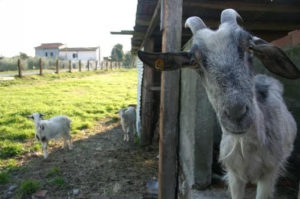 The different breeds found in Meghalaya are of three genetic groups, namely Assam hill goat, Black Bengal besides the non-descript goats. The Khasi hill goat is also a recognised breed of goat, which is on the verge of extinction, steps are therefore being taken to conserve and increase its population through selective breeding in State farms. Assam hill goats are widespread among the non-eastern states but their main home tract are in the hilly terrain of north Cachar, Karbi Anglong and adjoining hilly tract of Meghalaya state. They are mostly white with occasional black patches on the backline and legs. The adult body weight ranges from 15-26 kg. They are very poor milkers and mainly rear for meat purposes. Black Bengal are found throughout Bangladesh, West Bengal, Assam and Odisha. This breed is usually coloured black but it is also found in brown, white or grey. It produces high quality meat and skin.
The different breeds found in Meghalaya are of three genetic groups, namely Assam hill goat, Black Bengal besides the non-descript goats. The Khasi hill goat is also a recognised breed of goat, which is on the verge of extinction, steps are therefore being taken to conserve and increase its population through selective breeding in State farms. Assam hill goats are widespread among the non-eastern states but their main home tract are in the hilly terrain of north Cachar, Karbi Anglong and adjoining hilly tract of Meghalaya state. They are mostly white with occasional black patches on the backline and legs. The adult body weight ranges from 15-26 kg. They are very poor milkers and mainly rear for meat purposes. Black Bengal are found throughout Bangladesh, West Bengal, Assam and Odisha. This breed is usually coloured black but it is also found in brown, white or grey. It produces high quality meat and skin.
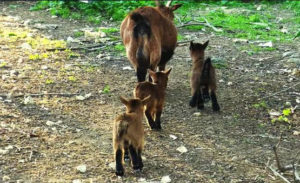 Engaging with Crescent Bamon, one of the goat breeders from Jaintia Hills District, who has been in the business for five years stated that goat farming is quite profitable as the initial investment is low as compared to other livestock species. The maintenance in terms of housing and feeding is low, and does not require much labour, thereby increasing his income. He also stated that the goats are mainly reared for the primary purpose of meat by selling it to meat vendors, while the milk is usually used for home consumption. Bamon also elucidated on expanding his farm as he views for lucrative returns in the long run.
Engaging with Crescent Bamon, one of the goat breeders from Jaintia Hills District, who has been in the business for five years stated that goat farming is quite profitable as the initial investment is low as compared to other livestock species. The maintenance in terms of housing and feeding is low, and does not require much labour, thereby increasing his income. He also stated that the goats are mainly reared for the primary purpose of meat by selling it to meat vendors, while the milk is usually used for home consumption. Bamon also elucidated on expanding his farm as he views for lucrative returns in the long run.
Others belonging to economically disadvantaged sections, expressed that goats act as a source of security, especially during low income months, as they fetch a good selling price in the market.
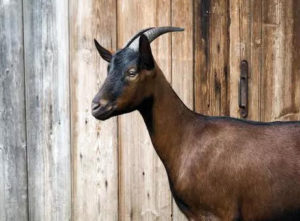 The system of rearing goats is quite simple and does not require much intensive labour as a small and simple shed is enough and does not require high maintenance as compared to other species of livestock. The system of rearing suitable in the state is 1) Tethering in which the goats are tied by long rope in the field and allowed to graze and kept in the shed at night. This system is suitable only if the farmer is rearing 1-3 goats. 2)Extensive system-The goats are let loose in the fields for grazing. 3)Semi-intensive system- The goats are allowed to graze 8-10 hours a day with limited concentrated feeds. This system is most suitable for the state. 4)Intensive system- In this system, goats are continuously kept under housing in confinement with limited access to land and provided with complete stall feeding.
The system of rearing goats is quite simple and does not require much intensive labour as a small and simple shed is enough and does not require high maintenance as compared to other species of livestock. The system of rearing suitable in the state is 1) Tethering in which the goats are tied by long rope in the field and allowed to graze and kept in the shed at night. This system is suitable only if the farmer is rearing 1-3 goats. 2)Extensive system-The goats are let loose in the fields for grazing. 3)Semi-intensive system- The goats are allowed to graze 8-10 hours a day with limited concentrated feeds. This system is most suitable for the state. 4)Intensive system- In this system, goats are continuously kept under housing in confinement with limited access to land and provided with complete stall feeding.
Housing management:
Due to high rainfall in our state resulting in wet and cold climatic conditions, shed construction plays an important role in keeping them healthy for optimum productivity. The size and design of the goat shed depends on the number of goats to be reared. The shed should be constructed on dry and properly raised grounds. In low lying areas and heavy 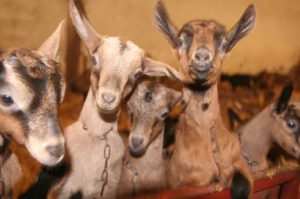 rainfall areas, the floors should be preferably elevated and made of wood or bamboo. The height and floor of the shed should not be less than 6 feet and 3 feet from the ground respectively and should have good ventilation. The roof can be of corrugated galvanised iron, asbestos or thatch depending on the financial condition of self. An open paddock with proper fencing should be constructed adjacent to the shed. Bucks(male) should be housed in individual pens and does(female) can be housed in groups up to 60 per pen. Avoid over-stocking or crowding.
rainfall areas, the floors should be preferably elevated and made of wood or bamboo. The height and floor of the shed should not be less than 6 feet and 3 feet from the ground respectively and should have good ventilation. The roof can be of corrugated galvanised iron, asbestos or thatch depending on the financial condition of self. An open paddock with proper fencing should be constructed adjacent to the shed. Bucks(male) should be housed in individual pens and does(female) can be housed in groups up to 60 per pen. Avoid over-stocking or crowding.
Feeding management:
Goats are browsers, so they prefer tree leaves and plant shoots while grazing. As goats are raised almost entirely on roughages, the cost of production is lower in comparison to other livestock. Grasses and vegetation are mostly non-leguminous and low in protein content therefore supplementation of concentrate feeds especially to pregnant and lactating animals is very important. In addition to grazing, especially in the rainy or lean season, goat farms should also have fodder tree plantations to feed the animals. Grasses or fodder trees that can be planted in our state climatic conditions are maize, oats, napier, guinea grass, mulberry, jackfruit, and subabul. Kids should be fed colostrum up to five days of age. Later, they can be put on kid starter ration. Salt and water should be provided to kids at all times.
 Goats are seasonal breeders. They usually breed twice in a year. In the semi-intensive system usually followed in our state, one male can serve up to 25 to 35 females. Animals should be bred 12 hours after the onset of the first symptoms of heat for maximum conception. In the advanced stage of pregnancy, the does must be transferred to either kidding pens or earmarked space for kidding within the main shed after thoroughly disinfecting it. After kidding, they should be provided with warm bran mash for two days.
Goats are seasonal breeders. They usually breed twice in a year. In the semi-intensive system usually followed in our state, one male can serve up to 25 to 35 females. Animals should be bred 12 hours after the onset of the first symptoms of heat for maximum conception. In the advanced stage of pregnancy, the does must be transferred to either kidding pens or earmarked space for kidding within the main shed after thoroughly disinfecting it. After kidding, they should be provided with warm bran mash for two days.
Perks aplenty
Goat meat (chevon) is lean meat (low cholesterol) and relatively beneficial for people who prefer a low energy diet. Also, goat milk is easier to digest than cow milk because of small fat globules and is naturally homogenised. Goat milk is non-allergic as compared to cow milk and is believed to have antifungal and antibacterial properties. Goat farming also creates employment to the rural poor and as time advances, there is ample scope for establishing cottage industries for goat meat and milk products and value addition to skin and fibre.
Contribution of goats has an overwhelming impact on the rural populace of the state. The beast, most commonly associated with the poor and has many a time been the only source of income for many such families. Rightly called ‘poor man’s cow’ by Mahatma Gandhi, goat farming can be concluded as a traditional, profitable, and low-risk because of its multi-utility and fast- growing rate. Hence, probing alternatives to traditionally labour and financially intensive modes of animal rearing and potentially a reliable tool for poverty alleviation and long term economic growth of the state.
(The authors are students of Veterinary Science and Animal Husbandry at the College of Veterinary Sciences and Animal Husbandry, Jalukie, Peren, Nagaland)



